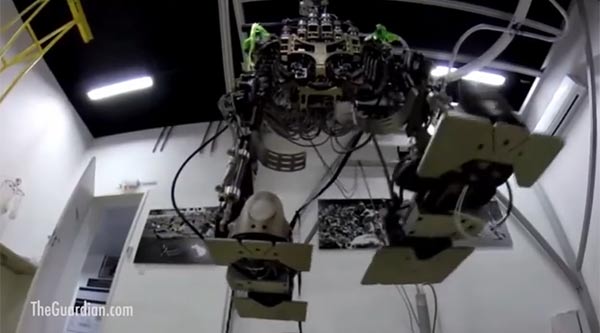Scientists are building a mind-controlled exoskeleton device, hoping to facilitate the kick-off the FIFA World Cup by a paralysed teenager. The World Cup starts on 12 June in Sao Paulo with the kicking of the ceremonial ball.
The powered robotic suit will utilise mind-controlled technology combined with 3D printing which will allow the teen to walk by using his brain power. To control the exoskeleton the teen will wear a unique helmet, custom made with 3D printed parts, which detects brainwaves in the frontal and parietal cortices.

Lead by Brazilian neuroscientist Dr. Miguel Nicolelis of Duke University, the effort is part of the Walk Again project, a non-profit international collaboration among various institutions which aims to create a suitable technology to beat paralysis. Scientists from Colorado State University and The Technical University of Munich and a French robotics lab are also contributing to the project.
"We want to galvanize people’s imaginations," explained Dr Nicolelis, according to the Washington Post. "With enough political will and investment, we could make wheelchairs obsolete."
The actual ceremonial ball kicker has not yet been chosen as the system is being tested on eight boys before one is selected for the big event. The selected kicker will also train in a VR environment beforehand to get used to walking with the new system.

This project was proposed to the Brazilian government as the World Cup is the world's largest sports competition and the ultimate sharing opportunity, football fan Dr Nicolelis said. "Sports can be a huge avenue to reach out to people that would never actually pay attention to science news," thinks Nicolelis. "I always wanted to show kids in Brazil how important science can be for society," he added.
Take a look at the video below, published by contributors from Colorado State University, which offers more details on how the system works, especially on how the helmet is made.













